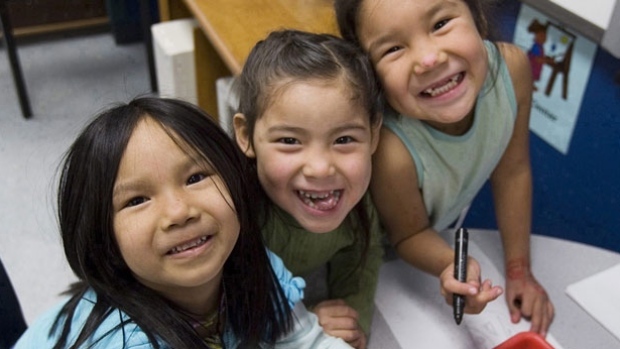Canadá: 5 ways education could produce a brighter future for Indigenous people
America del Norte/Canadá/junio de 2016/CBC news
Por: Erin Collins
RESUMEN: El gobierno federal se ha comprometido a reparar la relación entre los pueblos aborígenes y el resto de Canadá. Ese desafío fue un tema central de discusión para los miles que se reunieron en Calgary a principios de este mes para el Congreso 2016 – una reunión anual de los académicos de las ciencias sociales y humanidades del país. Aquí hay cinco grandes ideas de algunos de los principales pensadores del Canadá sobre cómo utilizar la educación y el aprendizaje para dar forma a un futuro mejor para las personas indígenas.
A little over a year since the Truth and Reconciliation Commission released its final report, the federal government has committed to repairing the relationship between Aboriginal Peoples and the rest of Canada.
The question is how.
That challenge was a central topic of discussion for thousands who gathered in Calgary earlier this month for Congress 2016 — an annual gathering of the country’s social science and humanities academics.
• Please join us 12:30 p.m. E.T. today for a Facebook Live discussion with Indigenous educators Kevin Lamoureux and Tasha Spillet.
Here are five big ideas from some of Canada’s leading thinkers on how to use education and learning to shape a brighter future for Indigenous people.
1. Level the playing field
Cindy Blackstock, executive director of the First Nations Child and Family Caring Society of Canada, has a simple idea for improving the lives of First Nations kids.
«End federal racial discrimination against kids and give them the future of their dreams.»
For Blackstock, who is also a professor at the University of Alberta, giving First Nations kids the same public services that other young people in Canada receive would be the perfect way to celebrate Canada’s 150th birthday next year.
2. Learn the language
Leroy Little Bear, a founding member of Canada’s first Native American Studies Department at the University of Lethbridge, believes that learning the Blackfoot language is a good idea for everyone, not just Indigenous people.
«Blackfoot is the way to a new science that will bring about tremendous changes in our contemporary world.»
Little Bear says Blackfoot people have a fundamentally different way of seeing the world but he adds that to share in that world view you have to speak the language.
3. Be like the buffalo
Kevin Lamoureux overcame a troubled childhood to become a respected professor at the University of Winnipeg. Now Lamoureux argues that the key to the future for First Nation, Inuit and Métis peoples is protecting the youth of today.
«We have a sacred duty to love and care for kids,» says Lamoureux, adding that it is a duty that can be observed in the behaviour of the buffalo. «The first thing they do instinctively is that the adults circle around the children in that community.»
Lamoureux says the best way to protect Indigenous children is to create safe, productive spaces in their schools.
4. Own the research
The arctic is a hotbed of cutting edge research these days, from scientists studying the impact of climate change to those who are probing the area for valuable natural resources.
Natan Obed, president of the Inuit Tapiriit Kanatami, has a big idea about how that research should be conducted. He says learning about traditional Inuit lands should be spearheaded by Inuit people.
«We are still a generation or two generations behind where we are in land claims agreements or in governance to ensure that we control, design and can participate and ultimately benefit from research in our communities.»
5. Respect the girls
Dustin Louie, a professor in the University of Calgary’s faculty of education, believes that elementary schools must take the lead preventing Indigenous girls from entering the sex trade.
He says schools can create a safe environment for Indigenous girls while at the same time changing the way other students view them.
«We need to work with non-Indigenous students to create a culture in Canada that doesn’t view Indigenous girls as disposable and simply sex objects.»
Fotos: Leading Canadian thinkers are offering solutions for how to use education and learning to shape a brighter future for Indigenous people. (CBC )
Fuente: http://www.cbc.ca/news/aboriginal/first-nations-canada-education-aboriginal-language-1.3636675








 Users Today : 68
Users Today : 68 Total Users : 35460199
Total Users : 35460199 Views Today : 97
Views Today : 97 Total views : 3418880
Total views : 3418880